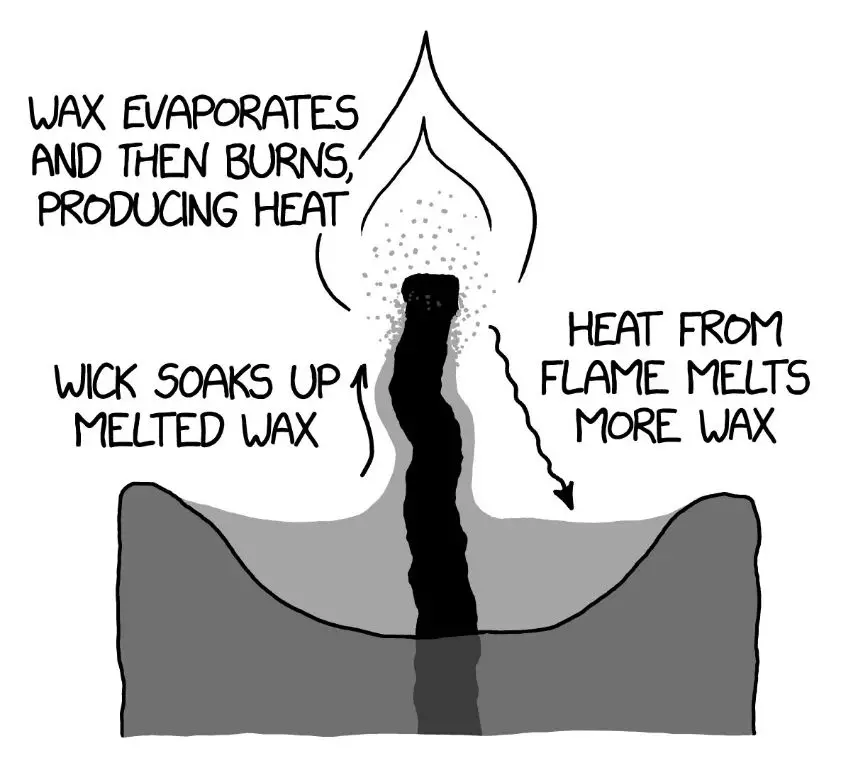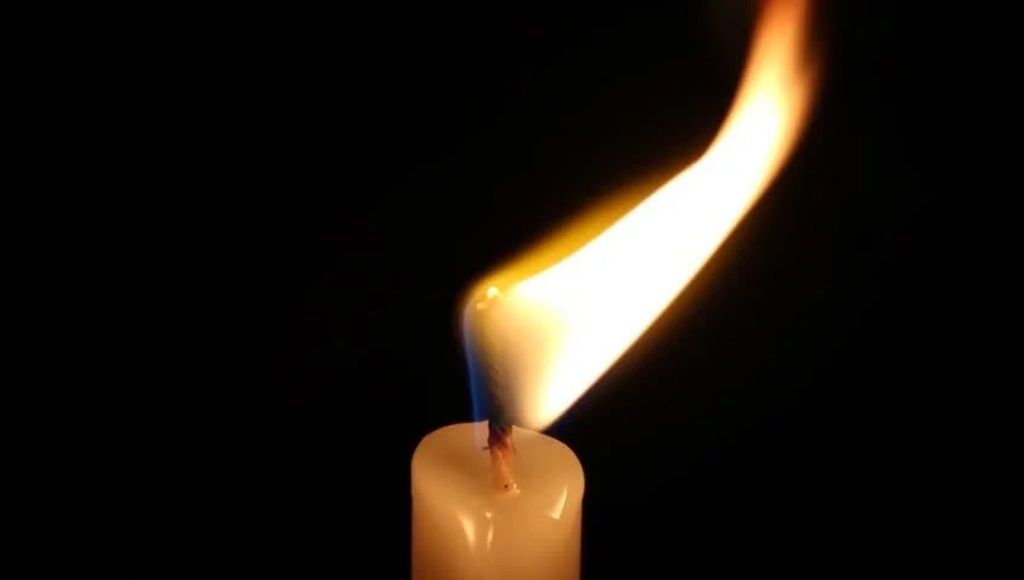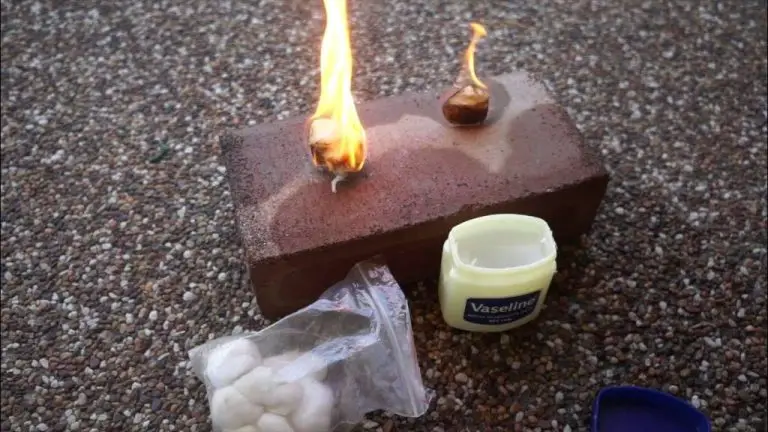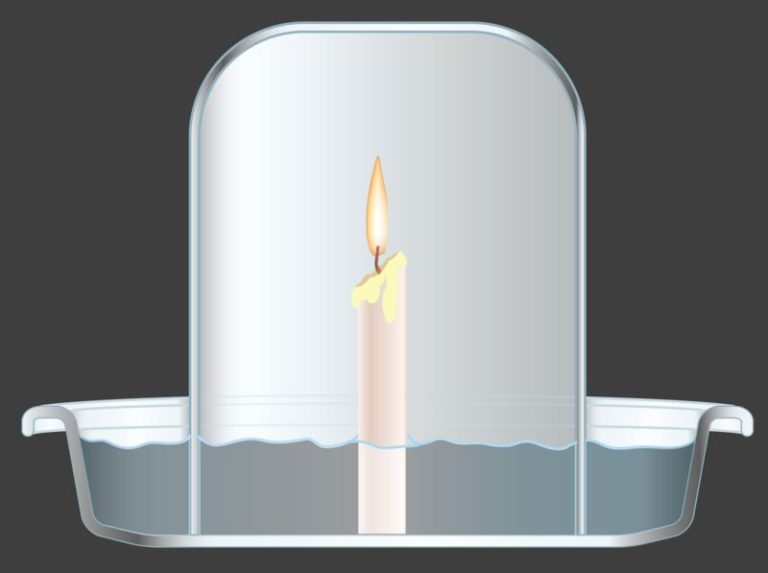How Do Flickering Candles Work?
The flickering or unsteady movement of a candle’s flame is something we often take for granted, yet it is a complex phenomenon with several interacting factors. A “flickering flame” refers to a candle flame that is constantly wavering, moving up and down, and altering shape, rather than burning straight and still.
The primary cause of a flickering candle flame is a constant interaction between the flame itself and the surrounding air currents. As hot air from the flame rises, cooler air must rush in to take its place. This oscillation between hot rising air and cool rushing air currents creates an unstable thermal environment that causes the flame to flicker.
In the sections below, we will explore the science behind flickering candle flames in more detail, looking at factors like the candle wick, wax melting point, convection currents, oxygen supply, and more.
Wick
The wick is a thin piece of material that transports melted wax via capillary action. Wicks are typically made from materials like cotton, paper, or braided fibers that have high capillarity. This means the material has tiny spaces or pores that allow liquid to flow up or through them against gravity. The shape of the wick is designed to maximize surface area – they are often flat or braided strands to provide many capillaries for the wax to travel through.

The purpose of the wick is to deliver the melted wax to the flame. As the candle burns, the heat melts the wax near the wick into a liquid, which then travels up the wick. This brings fresh fuel to the flame so it can continue burning. The wick also regulates the size of the flame by controlling the amount of melted wax. A larger wick has more capillaries and can transport more liquid wax, resulting in a bigger flame. Properly sized and shaped wicks are critical to controlling burn rate and preventing smoking, tunneling, or mushrooming.
Melting Point
The melting point of wax plays an important role in how a candle flickers. Wax is typically a mixture of hydrocarbons that have varying melting points. Paraffin wax, one of the most common types of candle wax, melts between 47–65°C. In order for the wax to be drawn up the wick, it must be melted from a solid state into a liquid state by the heat of the flame.
The closer the wax temperature gets to the flame, the hotter the wax becomes until it reaches its melting point temperature. Once melted, the liquid wax is then able to travel up the wick via capillary action and fuel the flame. This creates a cycle where solid wax is continuously melted into a liquid which is then drawn up the wick to the flame. The proximity of the melted wax pool to the heat source directly affects the rate of melting and wax supply to the flame, impacting flicker patterns.
Convection Currents
Convection currents play an important role in how candles flicker. As the flame heats the air around it, the hot air becomes less dense and rises upward. This creates a convection current, with hot air rising and cooler air sinking to take its place.
The hot air rising from the flame causes instability in the fire, making it flicker. As blobs of hot air rise, they temporarily starve the flame of oxygen right above it before cooler air moves in. This constant cycle of hot air rising and cool air sinking creates flickering.
The convection current also feeds oxygen to the flame. As hot air rises, more oxygen is pulled in at the base to fuel the fire. This circulation of air contributes to the flickering effect.
Without convection currents, the flame would be more steady. But the air movement causes fluctuations in temperature and oxygen supply that make the flame dance.
Oxygen Supply
The amount of oxygen that is able to reach the wick directly affects how a candle burns. Oxygen is required to sustain the flame, so an adequate supply is critical. As the candle wax melts, it creates a liquid pool around the wick. This wax pool will rise and fall depending on the melted wax evaporation rate. A deeper wax pool creates a barrier that restricts oxygen supply to the wick. With less oxygen reaching the wick, the flame will get smaller and begin to flicker more. Conversely, a shallower wax pool allows more oxygen to reach the wick, creating a larger, steadier flame. Maximizing oxygen supply results in an even burn, while oxygen depletion causes the flame to dim and flutter.

Wax Pool
As the candle burns, the wax melts and forms a pool of liquid wax around the wick. This wax pool is key to understanding how candles flicker.
The depth of the wax pool depends on the heat produced by the flame. More heat means the wax pool will extend deeper into the candle. The pool shape also depends on the candle’s container – in a taper candle, the pool is narrower while in a wide pillar candle, the pool is much broader.
The melted wax cannot stay still. Convection currents in the liquid wax cause it to move, flowing from areas of higher temperature to lower temperature. The wax closest to the wick is the hottest, so it flows outward toward the cooler edges of the container. This wax movement and convection also impacts the flickering.
Air Currents
Air currents play an important role in how a candle flame flickers. As the candle burns, it generates heat which rises upwards. This creates small vertical air currents around the flame as cooler air moves in to replace the rising warm air. Any drafts or breezes in the surrounding environment can also impact the flame, causing it to flutter from side to side.
Additionally, the way the room is ventilated makes a difference. In an enclosed space with no air flow, the flame will burn straight upwards. But if a window or door is opened, allowing air movement in the room, the breeze will cause the flame to flicker more. This demonstrates how sensitive candle flames are to even the slightest air currents.
The oxygen supply to the flame is also affected by air currents. Breezes and drafts can temporarily disrupt the availability of oxygen to the wick, making the flame dance and jump. Proper ventilation is important to make sure enough fresh oxygen can reach the flame for complete combustion.
In summary, flickering candle flames visually reveal the subtle air movements in a room. The complex dance of the flame results from the interplay between rising heat from the candle, air currents, breezes, ventilation, and availability of oxygen. This sensitivity to air flow is part of the charm and beauty of candlelight.
Carbon Particles
As the candle burns, some of the wax vaporizes while other wax molecules break down into carbon. This carbon, known as soot, is left behind on the wick as the wax burns. The soot is black in color, which is why we see the tip of the wick in a burning candle turn black.
The soot on the wick helps the candle to keep burning. As the soot heats up from the flame, it glows red hot. This allows the soot to vaporize and provide more fuel for the flame. The soot essentially acts as an additional wick that provides a constant fuel source as the candle burns.
However, too much soot buildup on the wick can be problematic. Large soot deposits will absorb more heat, making the wick hotter. This can cause the wick to burn unevenly by tunneling into the wax or bending over into the wax pool. Trimming the wick periodically removes excess soot buildup and allows the candle to burn properly.
Humidity
The amount of moisture in the air affects how well a candle burns. Dry air allows candles to burn brighter and stronger. However, very humid air contains more water vapor, which can weaken or extinguish a candle flame.
When humidity is high, water vapor in the air competes with the wax for oxygen. The water vapor prevents sufficient oxygen from reaching the wick, making it harder for the wax to vaporize and sustain the flame. The moisture can also cool the wax pool and wick, dampening the burning process.
Additionally, very humid conditions can cause wax to sweat or develop dew drops. This moisture on the candle can clog the wick, choking off the flame’s oxygen supply. Excessive humidity may even cause the entire candle to sweat profusely and drown its own flame.
Burning candles in dry indoor conditions generally provides the most optimal burning environment. But candles may struggle to stay lit or burn as brightly in muggy, humid weather if the moisture content in the air is exceptionally high.
Conclusion
In summary, the flickering of a candle flame is caused by a few key factors working in unison. The melted wax pool, convection currents, air currents, oxygen supply, and carbon particles in the flame all contribute to the characteristic flickering we see. This flickering is an important part of what makes candles so mesmerizing to look at. The way the flame dances and moves draws our eye in a way that a steady, unmoving flame does not.
The flickering also serves as a visible reminder of the chemical reaction and constant interplay of forces that allows a candle to burn. It highlights the delicate balance needed to sustain the flame and illustrates the effort required to keep it going. So next time you light a candle, take a moment to appreciate the complex yet beautiful science behind its flickering glow.





